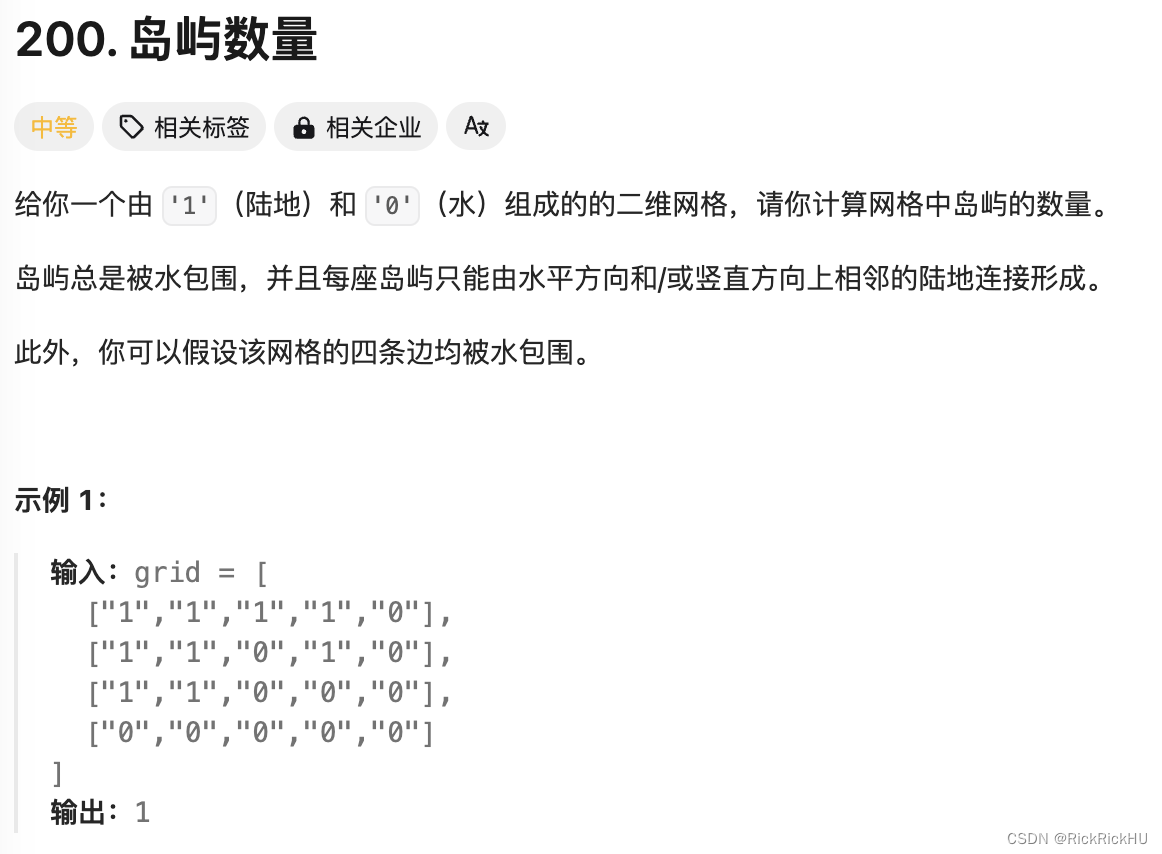1. 所有可能的路径

class Solution:def allPathsSourceTarget(self, graph: List[List[int]]) -> List[List[int]]:def dfs(graph, result, path, root): #result 返回结果, path记录路径, root记录遍历到了第几个节点if root == len(graph) - 1: #如果遍历到最后一个节点,记录结果并返回result.append(path.copy()) returnfor i in graph[root]: #遍历每个节点下一个能到的下一个节点path.append(i) #path直接添加dfs(graph, result, path, i) #dfs递归, 输入的root直接变成i,也就是当前遍历的下一个path.pop() #回溯result = []path = [0] #初始化的时候path里已经有最初始的节点位置root = 0 #起始节点为0dfs(graph, result, path, root)return result实际上就是回溯算法,区别在于:之前做的回溯的题目一般是列表里面一个一个元素遍历,所以在递归的时候有一个start_index变量,控制选与不选当前元素。
而dfs搜索找下一个节点的时候,不用一个个遍历graph中的节点,而是只需要遍历当前节点能到达的节点,因为如果当前节点都到不了的节点,就没有必要往后遍历了。
因此递归的dfs的输入就变成了当前遍历的节点i
2. 岛屿数量

广搜 bfs版本
class Solution:def __init__(self):self.dir = [(0, 1), (1, 0), (0, -1), (-1, 0)]self.count = 0def bfs(self, grid, visited, x, y): #广搜函数定义from collections import deque queue = deque() #初始化队列queue.append((x, y)) #加入起始节点visited[x][y] = True #标记起始节点为已访问while queue: #队列不为空进入循环curx, cury = queue.popleft() #取头节点for dx, dy in self.dir: #遍历四个方向nextx ,nexty = curx + dx, cury + dy if nextx < 0 or nextx >= len(grid) or nexty < 0 or nexty >= len(grid[0]): #越界就跳过continueif grid[nextx][nexty] == "0": #如果本题中是海水也跳过continueif not visited[nextx][nexty]: #把所有陆地标记为已访问queue.append((nextx, nexty))visited[nextx][nexty] = Truedef numIslands(self, grid: List[List[str]]) -> int:visited = [[False] * len(grid[0]) for _ in range(len(grid))] #初始化访问数组for i in range(len(grid)):for j in range(len(grid[0])): #遍历gridif visited[i][j] == False and grid[i][j] == "1": #如果节点没被访问过以及是陆地self.count += 1 #计数+1self.bfs(grid, visited, i, j) #深搜一下把当前节点连通的所有陆地都标记为已访问return self.count)


















